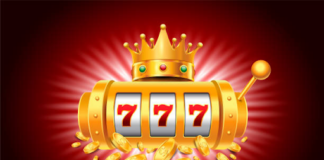Orthogonally means “opposite.” This phrase is used to describe a person’s mindset, or what is normal or correct for that person. I’ve been told it is usually used to describe a person’s attitude and behavior. The phrase is often used in a positive way to describe something that is not correct, but something that is the opposite of what is considered normal or correct. People will often say things like “I don’t think I’ve ever been that way before.
This is another phrase that can be used to describe the opposite of a person’s normal behavior. It can refer to a persons attitude, or to the fact that they have an opposite personality than their peers. For instance, someone who is always cheerful, but they have an opposite personality than the majority of people.
It’s when a person has an opposite personality than the majority of people that they can be considered to be eccentric or odd. For instance, a person who is always cheerful, but they have an opposite personality than the majority of people.
We use the term ‘orthogonally’ when we are trying to describe a person who is both happy and sad at the same time. For instance, a person who is always cheerful and happy at the same time.
We are not talking about a person who is always sad and gloomy. That would be an exception because such a person would not be considered to be eccentric by those who use the term orthogonally. But for the most part I think people are talking about people who are eccentric or odd in some way.
Orthogonally is a nice way to talk about someone who has a combination of happy and sad feelings all at the same time. It’s not a new word, it’s one of those words that’s been around for a while but it’s taken on a whole new meaning over the last few years. One of the first papers I read on orthogonally was published in 1993, “The Theory and Application of Orthogonally Saturated Sentences.
Orthogonally is a term that was coined in the mid-90s to describe a language that is capable of being “informative.” In orthogonally it’s a combination of two words that describe how the other parts of the sentence are used and what is being used. It’s really a way to describe something that’s not really in the sentence, but is actually more like the sentence itself.
Orthogonally is a way to describe a sentence where the sentence itself describes something that is not a sentence but rather the parts of the sentence. A sentence is all one word, but the parts of the sentence can be more like a larger structure that is not really in the sentence. So the parts of the sentence of a sentence that make up the sentence can be more like their own structures, and the sentence itself can be more like a larger structure that is not part of the sentence.
Orthogonally is used often when telling a story and is a way to describe the structure of a sentence that is not a sentence but rather the parts of a larger structure that are not in the sentence. A sentence usually has one word parts, and when you ask a friend what sentence they are in, you can ask the sentence structure.
In the above example, when I ask my friend “what sentence are you in?” I am asking what sentences they are in. I am not asking them what sentence parts are.









